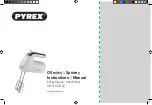
INPUT block
9
* Each of the diagrams shows the example of using
the input channel itself as the key-in signal for the
compressor.
Hint
The compressor on/off status and its parameters can
be set in the SELECTED INPUT CHANNEL block,
or in the display (IN GATE/COMP function COMP
PRM screen).
G
GATE [+]/[THR]/[–] LEDs
These LEDs indicate the operating status of the inter-
nal noise gate. If the noise gate is turned off, all LEDs
will be dark. If the noise gate is turned on, one of the
LEDs will light to indicate the currently selected type
and operating status of the noise gate.
When the noise gate type is GATE
When the noise gate type is DUCKING
* Each of the above diagrams shows the example of
using the input channel itself as the key-in signal
for the noise gate.
Hint
The noise gate on/off status and its parameters can
be set in the SELECTED INPUT CHANNEL block,
or in the display (IN GATE/COMP function GATE
PRM screen).
H
INPUT [SEL] switch and LED
This switch selects the input channel to which your
operations will apply. The [SEL] LED for the cur-
rently selected input channel will light.
The channel selected by this switch can be adjusted
in the SELECTED INPUT CHANNEL block, and
these adjustments will also be reflected in the display.
Hint
If the selected input channel is part of a pair, the
[SEL] LED will blink for the other input channel of
the pair.
You can also use the [SEL] switch to set/defeat pair-
ing.
[Procedure]
Using the [SEL] switch to set/defeat pairing
1. For two input channels that can be set as a pair,
hold down one of the [SEL] switches and press the
other [SEL] switch.
The direction in which the channel parameters are
copied will depend on the order in which the [SEL]
switches are pressed. When creating a pair, the
parameters of the channel you pressed first will be
copied to the channel that you pressed later, and then
the parameters will be linked.
For example if you wish to pair CH 1 and CH 2, hold
down the CH 1 [SEL] switch and press the CH 2
[SEL] switch. The state of CH 1 will be copied to CH
2. For details on the parameters that are copied/
linked for a pair, refer to “CS1D Reference Manual
(Appendices)” (
If you wish to reset the parameters, do so from the
screen.
2. To defeat pairing, hold down the [SEL] switch for
one of the paired channels, and press the [SEL]
switch for the other channel.
I
INPUT [NAME] indicator
This shows the short name of the input channel. The
short name can be input in the display (IN PATCH
function NAME screen, etc.).
J
Meter LEDs
These six LEDs indicate the input level of the input
channel. The position at which the level is detected
can be selected from the following locations: PRE
ATT. (before the attenuator), PRE GATE (immedi-
ately before the internal noise gate), PRE FADER
(immediately before the fader), POST FADER (imme-
diately after the fader), or POST ON (immediately
after the [ON] switch). The level detection point can
be selected in the display (METER function).
The peak level of this meter will not be held even if
the PEAK HOLD button is turned on in the display
(METER function input meter screen).
K
[ON] switch and LED
This switches the on/off status of the input channel.
(This LED will be lit for input channels that are
turned on.) If this switch is turned off, no signal will
be sent from that input channel to the STEREO bus
or MIX buses.
Time
Threshold level
Level
Output signal
Key-in signal
[–]
[–]
[THR]
[THR]
[+]
ATTACK
HOLD
GATE
Time
Threshold level
Level
Output signal
Key-in signal
[THR]
[THR]
[+]
ATTACK
HOLD
[–]
[–]
DUCKING
Содержание CS1D
Страница 1: ...Owner s Manual ...
Страница 5: ...Operating Manual ...
Страница 6: ...Operating Manual Start up ...
Страница 55: ...Operating Manual Basic Operation ...
Страница 214: ...Reference Manual ...
Страница 215: ...Reference Manual Hardware ...
Страница 332: ...Reference Manual Software ...
Страница 530: ...Reference Manual Appendices ...
















































